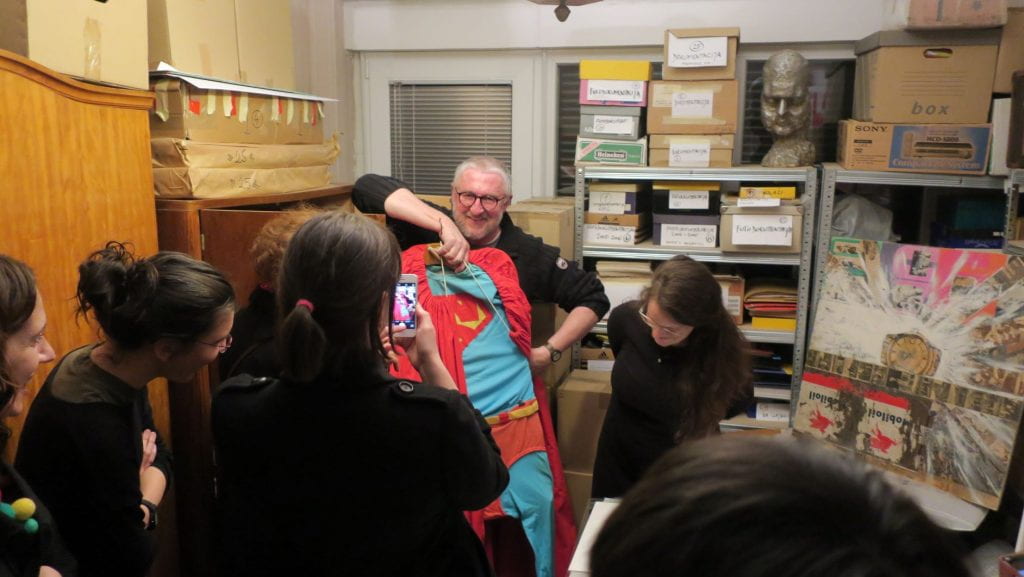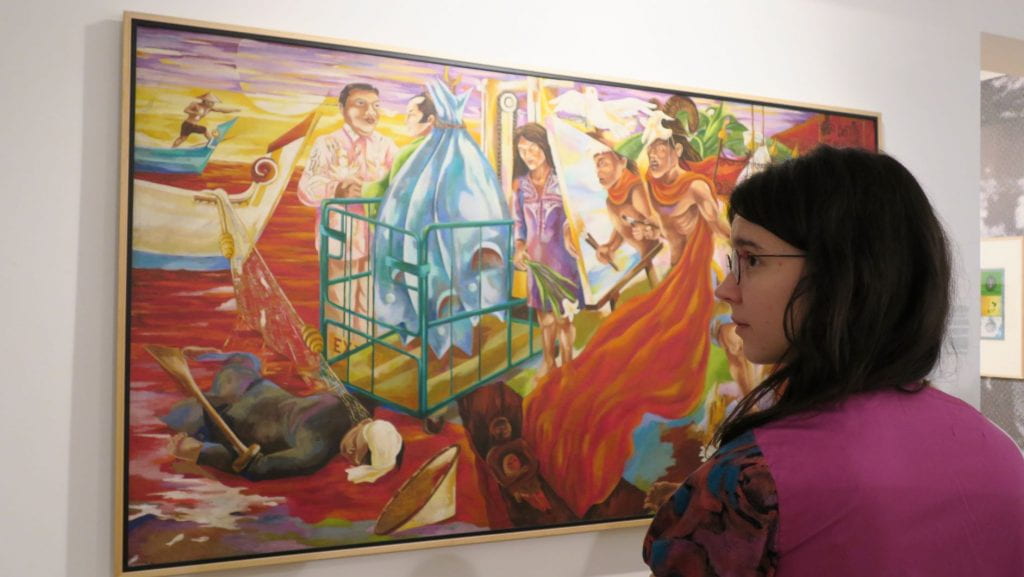Naming East European Art
By Maja Fowkes, on 30 June 2021

The third in this series of Confrontations online seminars held on 23 June 2021 dealt with the recurrent question of the choice of terminology in naming artistic phenomena in Eastern European art. The central issue of what is to be gained, and what lost, in using art labels developed in the context of Western art history to refer to art practices and trends that emerged in the specific and different conditions of Actually Existing Socialism was explored with reference to a range of terminological variations associated with particular art geographies. The potential for multi-directional terminological borrowings emerged in discussion as a strategy to complicate the writing of comparative art history, by pluralising and rendering more heterogenous accounts of global art movements.
In their introduction, Maja and Reuben Fowkes brought up the ‘suitcase model’ of art transfers, pointing to the frequency with which the spread of artistic paradigms to Eastern European art scenes has been explained in art history through artist travel to Western art centres, often by literally referring to the exhibition catalogues of new art trends that they brought back in their luggage. Taking pop art as a case in point, the complexity of the actual development of Eastern European versions of global art movements was explored, from the impossibility of reducing pop influences to a single source and the extent to which East European pop responded to changing social and technological conditions, to the ways in which artists turned the language of pop in critical or anti-capitalist directions. They also showed how recent survey exhibitions, both in the region and internationally, have sought to varying degrees to expand the understanding of pop art by reframing it as a global rather than Western phenomenon.
This week’s guest speaker was Miško Šuvaković, whose reflected on the methodologies of East European art history, including analysing with hindsight the approach taken in his co-edited book Impossible Histories: Historic Avant-Gardes, Neo-Avant-Gardes, and Post-Avant-Gardes in Yugoslavia, 1918–1991, which was published in 2003. He noted that while at the time the histories of the neo-avant-garde were ‘impossible’ because they were almost completely ignored, today the situation is reversed. He also explained that the focus on Yugoslavia rather than national art history met the expectations of the publishers, whose wanted a book ‘about New York, not the Bronx.’ By drawing attention to the way in which the authorities balanced Soviet and United States influence by alternating between visiting exhibitions from the two blocs, he emphasised through his presentation the hybridization of artistic phenomena in the Yugoslav art space.
Confrontations team member and leader of the seminar Alina Serban set out to explore how after the demise of the communist world in Eastern Europe, the writing of its own art history was fuelled by the desire of local and international scholars to find umbrella terms, some retrospectively applied, that would offer a readable translation of the processes of art-making in the region. She drew attention to the danger that by adopting the universality of Western idioms, in order to create a theoretical common ground, specific national traditions and self-historicizations could be overlooked, arguing for the coexistence of a multiplicity of readings of art terms. The question of balance also came to the fore here, between interpretations that take into account local conceptualisations and the those that enable the art of the region to become part of a global art historical discourse.
Among the Confrontations participants, Gregor Taul’s response pinpointed a series of terms that were current in the Soviet Baltics, but that have mostly fallen out of use in the post-communist period. These included the notion of the ‘synthesis of the arts’, which was regularly called for in party meetings, and ‘monumental decorative arts’, which had different connotations to public art, and ‘environment’, which carried also the sense of site-specific art. Dessislava Dimova’s intervention focused on conceptual art, and contrasting attitudes to the term in Bulgaria in the 1980s and early 1990s, pointing out that a lot of artists ‘refused to recognise their art through such terms’ and developed alternative formulations such as ‘end forms’ or ‘new forms.’ The debate then turned to how the discussion around so-called Western terms is changing, as new terms emerge outside of Western art centres and travel in all directions and the old terms are reshaped to encompass the plurality of non-Western art practices, while making visible their interconnections.
 Close
Close
















